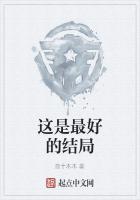THE AGRICULTURAL REVOLUTION
The Census of 1920 shows that hardly thirty per cent of the people are today engaged in agriculture, the basic industry of the United States, as compared with perhaps ninety per cent when the nation began.Yet American farmers, though constantly diminishing in proportion to the whole population, have always been, and still are, able to feed themselves and all their fellow Americans and a large part of the outside world as well.They bring forth also not merely foodstuffs, but vast quantities of raw material for manufacture, such as cotton, wool, and hides.
This immense productivity is due to the use of farm machinery on a scale seen nowhere else in the world.There is still, and always will be, a good deal of hard labor on the farm.But invention has reduced the labor and has made possible the carrying on of this vast industry by a relatively small number of hands.
The farmers of Washington's day had no better tools than had the farmers of Julius Caesar's day; in fact, the Roman ploughs were probably superior to those in general use in America eighteen centuries later."The machinery of production," says Henry Adams, "showed no radical difference from that familiar in ages long past.The Saxon farmer of the eighth century enjoyed most of the comforts known to Saxon farmers of the eighteenth."* One type of plough in the United States was little more than a crooked stick with an iron point attached, sometimes with rawhide, which simply scratched the ground.Ploughs of this sort were in use in Illinois as late as 1812.There were a few ploughs designed to turn a furrow, often simply heavy chunks of tough wood, rudely hewn into shape, with a wrought-iron point clumsily attached.The moldboard was rough and the curves of no two were alike.Country blacksmiths made ploughs only on order and few had patterns.Such ploughs could turn a furrow in soft ground if the oxen were strong enough--but the friction was so great that three men and four or six oxen were required to turn a furrow where the sod was tough.
* "History of the United States", vol.I, p.16.
Thomas Jefferson had worked out very elaborately the proper curves of the moldboard, and several models had been constructed for him.He was, however, interested in too many things ever to follow any one to the end, and his work seems to have had little publicity.The first real inventor of a practicable plough was Charles Newbold, of Burlington County, New Jersey, to whom a patent for a cast-iron plough was issued in June, 1797.But the farmers would have none of it.They said it "poisoned the soil"and fostered the growth of weeds.One David Peacock received a patent in 1807, and two others later.Newbold sued Peacock for infringement and recovered damages.Pieces of Newbold's original plough are in the museum of the New York Agricultural Society at Albany.
Another inventor of ploughs was Jethro Wood, a blacksmith of Scipio, New York, who received two patents, one in 1814 and the other in 1819.His plough was of cast iron, but in three parts, so that a broken part might be renewed without purchasing an entire plough.This principle of standardization marked a great advance.The farmers by this time were forgetting their former prejudices, and many ploughs were sold.Though Wood's original patent was extended, infringements were frequent, and he is said to have spent his entire property in prosecuting them.
In clay soils these ploughs did not work well, as the more tenacious soil stuck to the iron moldboard instead of curling gracefully away.In 1833, John Lane, a Chicago blacksmith, faced a wooden moldboard with an old steel saw.It worked like magic, and other blacksmiths followed suit to such an extent that the demand for old saws became brisk.Then came John Deere, a native of Vermont, who settled first in Grand Detour, and then in Moline, Illinois.Deere made wooden ploughs faced with steel, like other blacksmiths, but was not satisfied with them and studied and experimented to find the best curves and angles for a plough to be used in the soils around him.His ploughs were much in demand, and his need for steel led him to have larger and larger quantities produced for him, and the establishment which still bears his name grew to large proportions.
Another skilled blacksmith, William Parlin, at Canton, Illinois, began ****** ploughs about 1842, which he loaded upon a wagon and peddled through the country.Later his establishment grew large.
Another John Lane, a son of the first, patented in 1868 a "soft-center" steel plough.The hard but brittle surface was backed by softer and more tenacious metal, to reduce the breakage.The same year James Oliver, a Scotch immigrant who had settled at South Bend, Indiana, received a patent for the "chilled plough." By an ingenious method the wearing surfaces of the casting were cooled more quickly than the back.The surfaces which came in contact with the soil had a hard, glassy surface, while the body of the plough was of tough iron.From small beginnings Oliver's establishment grew great, and the Oliver Chilled Plow Works at South Bend is today one of the largest and most favorably known privately owned industries in the United States.















